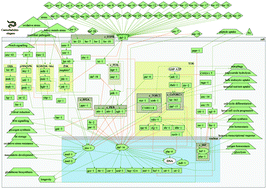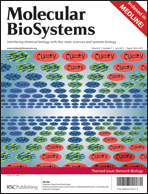Several components have been previously identified, that modulate longevity in several species, including the target of rapamycin (TOR) and the Insulin/IGF-1 (IIS) signalling pathways. In order to infer paths and transcriptional feedback loops that are likely to modulate ageing, we manually built a comprehensive and computationally efficient signalling network model of the IIS and TOR pathways in worms. The core insulin transduction is signalling from the sole insulin receptor daf-2 to ultimately inhibit the translocation of the transcription factor daf-16 into the nucleus. Reduction in this core signalling is thought to increase longevity in several species. In addition to this core insulin signalling, we have also recorded in our worm model the transcription factors skn-1 and hif-1, those are also thought to modulate ageing in a daf-16 independent manner. Several paths that are likely to modulate ageing were inferred via a web-based service NetEffects, by utilising perturbed components (rheb-1, let-363, aak-2, daf-2;daf-16 and InR;foxo in worms and flies respectively) from freely available gene expression microarrays. These included “routes” from TOR pathway to transcription factors daf-16, skn-1, hif-1 and daf-16 independent paths via skn-1/hif-1. Paths that could be tested by experimental hypotheses, with respect to relative contribution to longevity, are also discussed. Direct comparison of the IIS and TOR pathways in both worm and fly suggest a remarkable similarity. While similarities in the paths that could modulate ageing in both organisms were noted, differences are also discussed. This approach can also be extended to other pathways and processes.

This article is Open Access
 Please wait while we load your content...
Something went wrong. Try again?
Please wait while we load your content...
Something went wrong. Try again?


 Please wait while we load your content...
Please wait while we load your content...